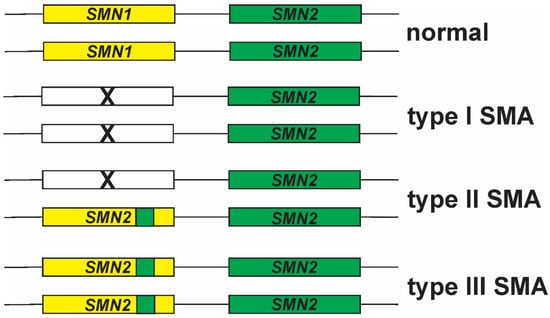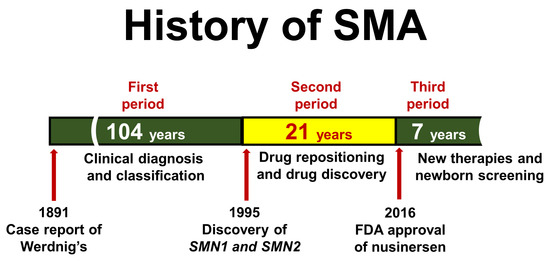Our Blog
Tackling the Complexity of Spinal Muscular Atrophy with Generative AI
Mrinal Subhash • Oct 15, 2024
8 min read
Revolutionizing Spinal Muscular Atrophy (SMA) Treatment with Generative AI
Imagine a world where a debilitating genetic disorder that once seemed unsurmountable is now on the brink of a breakthrough—thanks to the power of artificial intelligence. Spinal Muscular Atrophy (SMA) has long been a source of heartbreak for families, as it progressively robs children and adults of their ability to move, breathe, and live independently. But what if cutting-edge technology could change that?
In an era where AI is redefining industries, could it also hold the key to unraveling the complexities of SMA and, more importantly, finding a cure? Welcome to the frontier of medical innovation, where generative AI is not just a tool, but a beacon of hope for those battling SMA.
In this article, we’ll explore how generative AI is transforming the way we understand and approach this challenging disease, offering new avenues for treatment and possibly, a path to a brighter future.
Understanding SMA
SMA is caused by mutations in the Survival Motor Neuron 1 (SMN1) gene, located on chromosome 5. The SMN1 gene is responsible for producing the Survival Motor Neuron (SMN) protein, which is crucial for the health and function of motor neurons.
Humans have a closely related gene called SMN2. While SMN2 also produces the SMN protein, it is less efficient than SMN1 due to a single nucleotide change in its sequence. This change leads to the production of a shorter, less functional version of the SMN protein.
In individuals with SMA, mutations in the SMN1 gene result in either a non-functional SMN protein or complete loss of the protein. Without sufficient levels of functional SMN protein, motor neurons degenerate and die. This loss of motor neurons leads to the muscle weakness and atrophy characteristic of SMA. The severity of SMA is influenced by the number of copies of the SMN2 gene a person has. While SMN2 can partially compensate for the loss of SMN1, it cannot fully prevent the disease. Individuals with more copies of SMN2 tend to have milder forms of SMA, as the extra copies can produce more of the SMN protein, albeit less efficiently.

Image Source: Image depicting Spinal Muscular Atrophy, sourced from the Christopher Reeve Foundation. https://www.mdpi.com/ijms/ijms-22-07896/article_deploy/html/images/ijms-22-07896-g002-550.jpg
Impact of SMA
Spinal Muscular Atrophy (SMA) primarily affects the body by targeting the motor neurons in the spinal cord, leading to progressive muscle weakness and atrophy. Here’s a breakdown of its impact:
- Motor Neuron Degeneration: Motor neurons are the nerve cells that transmit signals from the brain and spinal cord to muscles, enabling movement. In SMA, the lack of sufficient SMN protein causes these neurons to degenerate and die, leading to muscle weakness and atrophy.
- Muscle Weakness and Atrophy: The hallmark of SMA is progressive muscle weakness, particularly in the proximal muscles, such as those in the shoulders, hips, and back.
- Respiratory Complications: The muscles involved in breathing can also be affected, leading to respiratory issues. In severe cases, individuals with SMA may require ventilatory support to assist with breathing.

Image Source: Image Source: The Cost of a Life: Five Crore. https://www.onmanorama.com/lifestyle/health/2019/03/05/the-cost-of-a-life--five-crore.html
Generative AI in SMA Treatment
Generative AI is revolutionizing the treatment of Spinal Muscular Atrophy (SMA) by accelerating drug discovery, personalizing therapies, and enhancing patient care. Through advanced algorithms and deep learning techniques, AI models analyze vast amounts of genetic and clinical data to identify potential therapeutic targets and predict the efficacy of new drugs. This enables researchers to design more effective treatments with greater precision.
Generative AI also facilitates the creation of personalized medicine by modeling patient-specific disease progression and tailoring interventions accordingly. Additionally, AI-driven simulations and virtual trials are reducing the time and cost associated with clinical studies, expediting the path from research to real-world application. Collectively, these advancements are enhancing the development of targeted therapies and improving outcomes for individuals affected by SMA.
Workflow of Drug Creation for SMA Using Generative AI
This flowchart depicts exactly what goes into the workflow of creating a drug that could treat SMA with the intervention of Generative AI. Below is a detailed elaboration of each step in the flowchart:
- Data Collection and Integration: In the initial phase, data from diverse sources such as genomic sequences, clinical records, and patient histories are collected. Generative AI synthesizes this vast amount of data into a coherent structure, identifying patterns indicative of SMA.
- Predictive Modeling and Analysis: Generative AI creates predictive models that forecast the onset of SMA by analyzing genetic and environmental factors.
- Drug Discovery and Design: Generative AI is employed in designing new drugs tailored to counteract SMA effects, significantly accelerating the drug discovery timeline.
- Preclinical and Clinical Trials: Generative AI simulates drug interactions and predicts trial outcomes, refining the drug before it reaches clinical trials.
- Personalized Medicine: Generative AI tailors treatment plans for individual patients, optimizing efficacy based on unique genetic makeup.
- Monitoring and Feedback: Generative AI continuously monitors patient responses in real-time, suggesting adjustments to treatment plans as necessary.
- Ethical and Regulatory Considerations: Generative AI assists in maintaining documentation and ensuring compliance with regulatory standards throughout the process.
- Collaboration and Sharing: Generative AI facilitates seamless collaboration among researchers, healthcare providers, and pharmaceutical companies through data sharing.
Companies Leading the Charge
By harnessing the power of artificial intelligence, researchers and companies are unlocking new possibilities in drug discovery, genetic therapy, and personalized medicine. Here’s a detailed breakdown of how each company is making strides with generative AI in the fight against Spinal Muscular Atrophy (SMA):
1. Rarebase
Rarebase is leading the charge in AI-powered drug discovery, specifically targeting rare diseases like SMA. The company leverages advanced generative AI algorithms to analyze biological data, identify potential drug candidates, and predict their effectiveness, significantly speeding up the drug development process.
2. Deep Genomics
Deep Genomics integrates generative AI with genetic research to tackle SMA. Their AI platformsmeticulously analyze genetic mutations associated with the disease and predict how these mutations influence disease progression and drug responses. This allows them to design targeted genetic therapies customized for specific genetic profiles of SMA patients.
3. Zymeworks
Zymeworks utilizes generative AI to advance the development of protein-based therapeutics for SMA. Their approach involves designing and optimizing protein structures that effectively target and modulate the disease's underlying mechanisms. By generating and testing millions of protein variants in silico, Zymeworks identifies the most promising candidates for clinical trials.
4. Neurogenesis
Neurogenesis harnesses generative AI to explore the potential of repurposing existing drugs for SMA. Their AI systems analyze a vast array of existing medications and predict their effectiveness against SMA-related targets, fast-tracking the development of new treatments without starting from scratch.
5. Biogen
Biogen is leveraging generative AI to enhance its clinical research efforts for SMA. Their AI models analyze patient data from clinical trials to uncover insights into how different treatments impact disease progression and patient outcomes, driving forward the development of more effective and personalized SMA treatments.
The Future of SMA Treatment
Generative AI is revolutionizing the way we approach Spinal Muscular Atrophy (SMA) and broader healthcare challenges. By generating predictive models, AI helps identify potential drug candidates, forecast disease progression, and personalize treatment plans, leading to more targeted and effective interventions.
For instance, the drug nusinersen, a breakthrough in SMA treatment, has significantly improved motor function and survival rates in patients. With the aid of AI, the optimization of such drugs becomes more streamlined, ensuring that patients receive the most effective therapies faster. As generative AI continues to advance, it holds the potential to not only enhance existing treatments like nusinersen but also pave the way for novel therapies that could eventually eradicate diseases like SMA.
Conclusion
In the battle against SMA, a condition that affects approximately 1 in 10,000 live births globally, generative AI offers a beacon of hope. The technology’s ability to model complex biological processes and simulate drug interactions enables researchers to design more effective treatments and streamline development processes.
The impact extends beyond drug discovery. Generative AI’s capacity to analyze patient data and predict disease progression can lead to more personalized and timely interventions. This is particularly important for SMA, where early and precise treatment is critical to improving patient outcomes.
As technology continues to progress, the collaboration between AI and biomedical research will undoubtedly lead to breakthroughs that could transform the lives of millions.

Image Source: "Schematic of SMN protein function and its implication in SMA pathogenesis," published in the International Journal of Molecular Sciences. https://www.mdpi.com/ijms/ijms-24-11939/article_deploy/html/images/ijms-24-11939-g001-550.jpg

Mrinal Subhash
Bioinformatics Specialist @CellStrat
After completing my Bachelor's in Electronics and Instrumentation, I pursued my Master's in Bioinformatics, at Northeastern University which gave me the exposure to apply my coding knowledge in the Biotech space. Post that, I have worked in a couple of startups in India as an AI/ ML engineer and I have obtained skills in several programming languages that can make me a valuable contribution to the AI community.
